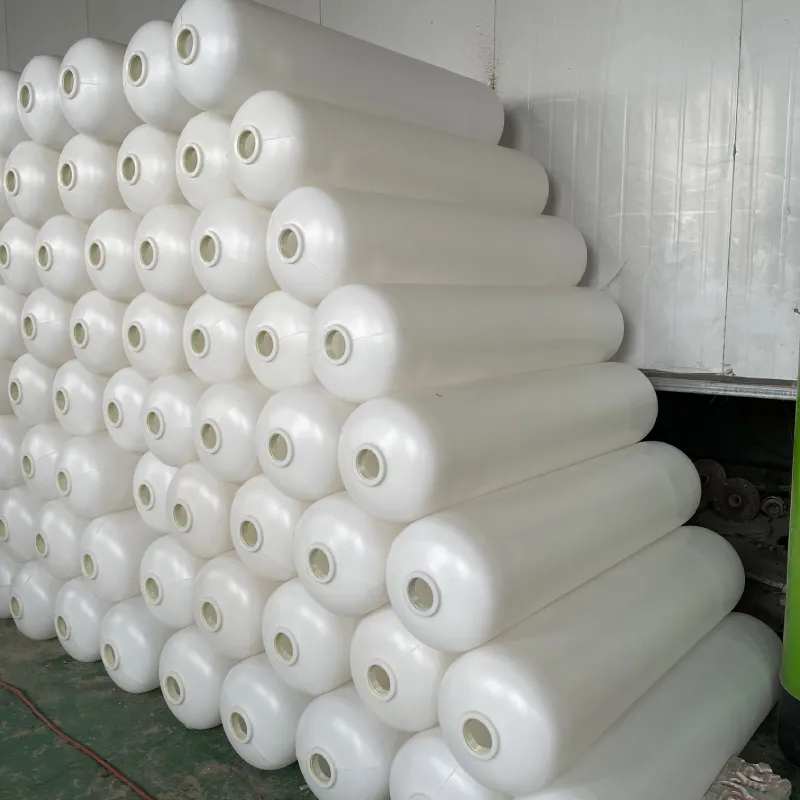loading...
- No. 9, Xingyuan South Street, Dongwaihuan Road, Zaoqiang County, Hengshui, Hebei, China
- admin@zjcomposites.com
- +86 15097380338
- Welcome to visit our website!
industrial ro water system
Understanding the Industrial RO Water System
Reverse osmosis (RO) is a widely recognized water treatment technology that effectively removes impurities and dissolved solids from water. In industrial applications, the RO water system plays a vital role in ensuring that water meets the required standards for various uses, such as manufacturing processes, boiler feeds, and chemical production. This article explores the components, functioning, benefits, and applications of industrial RO water systems.
Components of an Industrial RO Water System
An industrial RO water system is typically composed of several key components, each playing a critical role in the water purification process
1. Pre-treatment Units Before water undergoes reverse osmosis, it must be pre-treated to remove larger particles and contaminants. This often involves filtration units, such as multimedia filters and activated carbon filters, that eliminate suspended solids, chlorine, and organic compounds, ensuring the longevity of the RO membranes.
2. RO Membrane The core component in an RO system, the membrane allows only water molecules to pass while rejecting dissolved salts, heavy metals, and other impurities. The efficiency of the membrane is crucial for the system's overall performance.
3. High-Pressure Pump To force water through the membranes, a high-pressure pump is necessary. This pump creates the necessary pressure to overcome osmotic pressure and drive the water through the selective membrane.
4. Post-treatment Units After RO treatment, some systems incorporate additional treatment stages, such as UV disinfection or remineralization, to ensure the purified water meets specific quality standards for its intended use.
5. Control Panels Modern industrial RO systems are equipped with control panels that monitor and regulate the entire process, allowing for real-time adjustments and ensuring optimal operation.
How Industrial RO Systems Work
The industrial RO water treatment process begins with the intake of feed water, which undergoes pre-treatment to remove impurities. Once pre-treated, the water is pumped at high pressure through the RO membranes. As the pressure forces the water through the membranes, purified water — referred to as permeate — is separated from the concentrated waste stream, known as brine.
industrial ro water system

The efficiency of this process is influenced by factors such as feed water quality, temperature, and system pressure. Typically, an industrial RO system can achieve up to 90-99% rejection of dissolved solids, producing high-quality water suitable for a variety of industrial needs.
Benefits of Industrial RO Water Systems
1. High Purity Water The primary advantage of an industrial RO system is its ability to produce high-purity water, free from contaminants that could interfere with industrial processes.
2. Cost-Effective While the initial investment may be significant, industrial RO systems can lead to substantial cost savings over time, reducing water treatment chemicals and wastewater disposal costs.
3. Space Efficiency Industrial RO systems can be compact, saving valuable space in manufacturing facilities while still ensuring high output rates.
4. Environmentally Friendly By recycling and reusing water, these systems help industries reduce their freshwater intake, contributing to sustainability goals.
Applications of Industrial RO Water Systems
Industrial RO water systems find applications in various sectors, including
- Food and Beverage Ensuring the safety and quality of water used in production processes. - Pharmaceuticals Providing pure water for medications and manufacturing processes. - Power Generation Producing boiler feed water free of impurities that could cause scaling and corrosion. - Electronics Supplying ultra-pure water for manufacturing semiconductor devices.
Conclusion
In conclusion, industrial RO water systems are integral to modern water treatment solutions across various industries. By providing efficient, high-quality water purification, they support operational efficiency and sustainability while adhering to regulatory standards. With the growing emphasis on water conservation and quality, the role of RO technology is likely to expand further in the industrial landscape.
-
Premium FRP Handrail for All ApplicationsNewsAug.29,2025
-
Low Maintenance FRP Mini Mesh Grating ProductsNewsAug.29,2025
-
Innovative FRP Square Tubes for Modern Industrial SolutionsNewsAug.29,2025
-
FRP Water Storage Tanks Wholesale Solutions for Bulk BuyersNewsAug.29,2025
-
FRP Molded Grating Solutions for Diverse Industrial ApplicationsNewsAug.29,2025
-
Construction Advancements Through FRP Pultruded ProfilesNewsAug.29,2025
-
Why Choose FRP Railings, Guardrails, and Handrail Systems?NewsAug.29,2025
